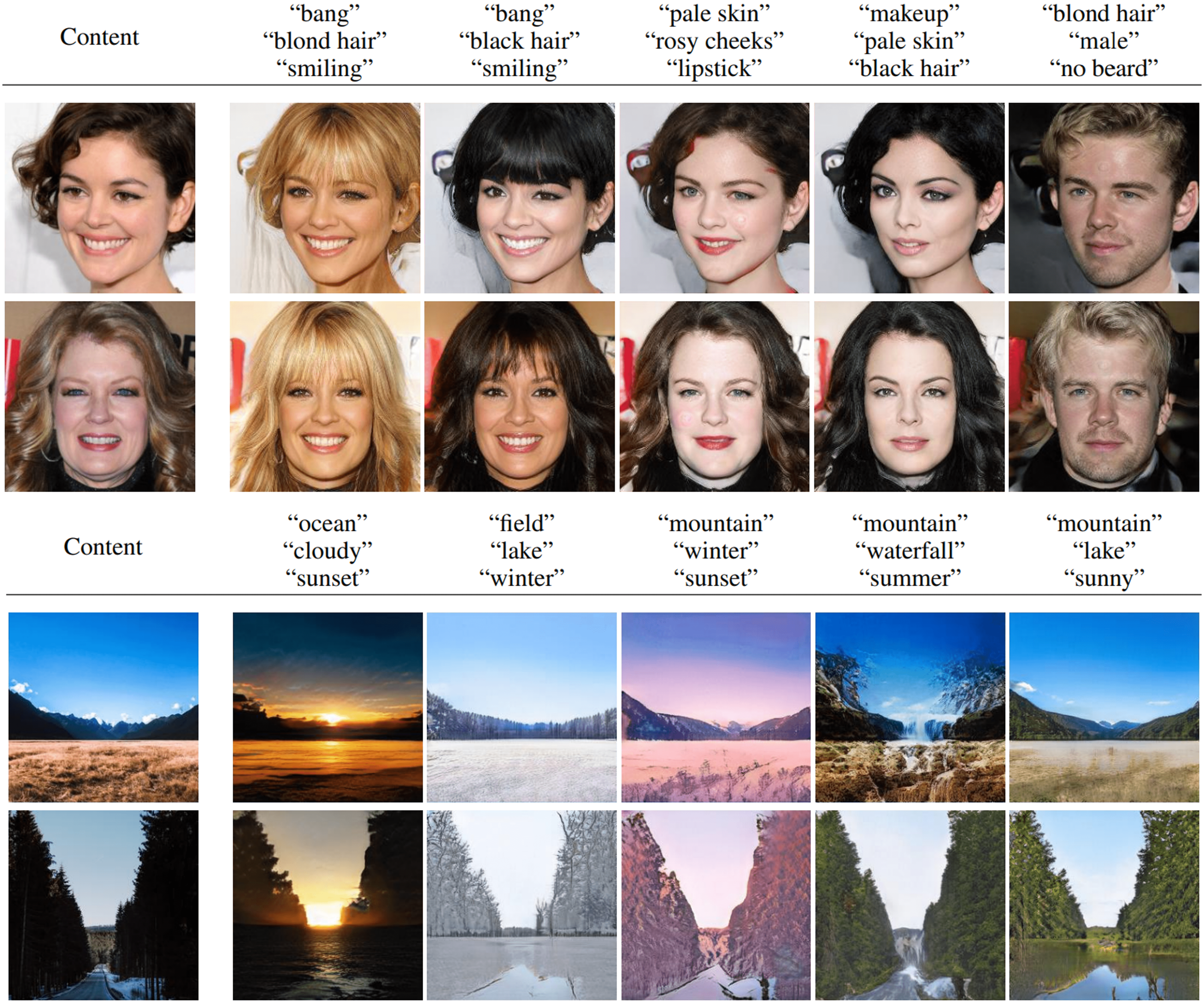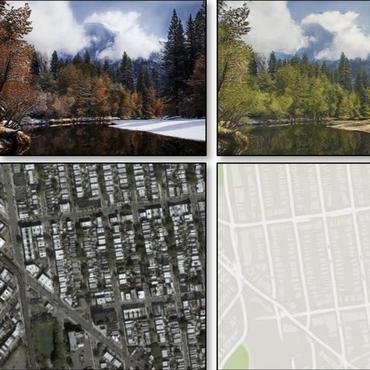LANIT: Language-Driven Image-to-Image Translation for Unlabeled Data
Existing techniques for image-to-image translation commonly have suffered from two critical problems: heavy reliance on per-sample domain annotation and/or inability of handling multiple attributes per image. Recent truly-unsupervised methods adopt clustering approaches to easily provide per-sample one-hot domain labels. However, they cannot account for the real-world setting: one sample may have multiple attributes. In addition, the semantics of the clusters are not easily coupled to the human understanding. To overcome these, we present a LANguage-driven Image-to-image Translation model, dubbed LANIT. We leverage easy-to-obtain candidate attributes given in texts for a dataset: the similarity between images and attributes indicates per-sample domain labels. This formulation naturally enables multi-hot label so that users can specify the target domain with a set of attributes in language. To account for the case that the initial prompts are inaccurate, we also present prompt learning. We further present domain regularization loss that enforces translated images be mapped to the corresponding domain. Experiments on several standard benchmarks demonstrate that LANIT achieves comparable or superior performance to existing models.
PDF Abstract CVPR 2023 PDF CVPR 2023 Abstract




 FFHQ
FFHQ
 CelebA-HQ
CelebA-HQ
 Food-101
Food-101
 LHQ
LHQ